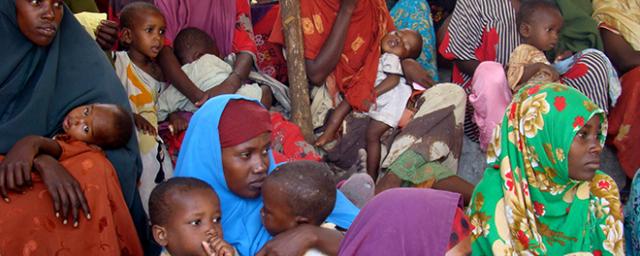
In the middle of 2011 a massive food crisis hit East Africa and the first famine of the 21st century was declared in Somalia. An estimated 13 million people were affected across Somalia, Kenya and Ethiopia. Countless people were left without livestock, harvests or livelihoods. The famine in Somalia is thought to have left tens of thousands of people dead.
"Livestock are our capital, but they are dying," explained Hanura Awalay at the time. "There’s no forage, no grain, nothing for them to eat during the dry season. Because of the drought, everything is scarce. We don’t know what to do," Hanura Awalay lives in a remote community in the Shinile zone – in eastern Ethiopia’s Somali Region.
We knew that immediate aid was not enough
We responded immediately with food and water and also distributed shelter and hygiene equipment to the thousands forced to flee their homes. Thanks to your generosity we were able to reach more than 2.8 million people with life-saving support. Though essential, we knew these basics were not enough. We mobilized longer term projects to rebuild lives and livelihoods in the region and defend against a repeat of the crisis. We also appealed to governments and others to do more.
Our projects aimed to combine immediate aid and longer term sustainable development. We drilled boreholes and developed motorized water schemes to ensure the supply of water to remote communities, trucked in and treated water, provided therapeutic feeding centers (which assess the level of malnutrition in children, and bring them back from the brink of starvation) and taught the importance of basic hygiene practices such as hand washing.
“This nutrition center is extremely important for us, Without it, hundreds of children would already have died from malnutrition.” said Sahro, a Somali mother of five, who got aid from one of our therapeutic feeding centers in Mogadishu, run by our local partners SAACID (meaning ‘to help’ in the local language).
Full scale famine can be prevented
By the time a famine was officially declared in Somalia in 2011, and action and adequate funding were finally made available, there had already been 16 warnings of a crisis waiting to happen. In January 2012 we published a briefing jointly with Save the Children examining the factors that allowed the initial drought to turn to a full scale food crisis and famine, affecting 13 million people. This report recommended crucial changes of approach for international aid agencies – managing the risk not the crisis, and also described how the resilience of local communities might be enhanced to face such situations in the future. We found that decisive action is needed early, rather than responding when the crisis has happened; all actors need to be working toward reducing drought risk and building community resilience; and the barriers between development aid and emergency humanitarian aid need to be broken down to allow crisis prevention before it’s too late. Early warnings require early action, and prevention is better than cure.
“Responding after a food crisis costs at least three times more than taking preventive action". said Enzo Vecchio, Oxfam Somalia Country Director.